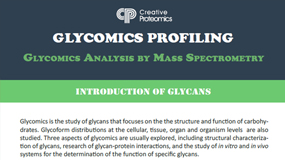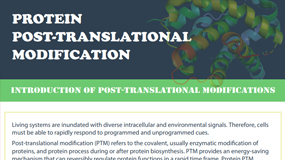What Is Polysaccharides
Polysaccharides form a diverse and complex family of biological macromolecules. They are polymeric carbohydrate molecules composed of long chains of monosaccharide units joined together by glycosidic linkages. It gives the constituent monosaccharides or oligosaccharides during hydrolysis. Polysaccharides own high molecular weights due to containing hundred to several thousand monosaccharides as well as polydispersed in nature with a wide range of closely related structures.
Polysaccharides categorized according to their molecular characteristics (type, number, bonding and sequence of monosaccharides), physicochemical characteristics (water solubility, viscosity, surface activity) and nutritional function (digestible or non-digestible). Polysaccharides contain only one type of monosaccharide repeating in the chain are termed homopolysaccharides, such as starch, cellulose and glycogen which are formed from only glucose, whereas those formed with two or more constituent monosaccharides are known as heteropolysaccharides, such as pectin, hemicellulose and gums. Polysaccharides can be linear, branched or even cyclic with a certain consequences owing to physicochemical nature themselves.
Polysaccharides are abundant in nature and found in nearly every living organism. They can function as storage polysaccharides, such as starch in plants and glycogen in animals, structural elements in the cell walls of bacteria and plants and skeletal elements in arthropods. They can also be found linked to proteins and lipids, and have been implicated in cell–cell recognition and molecular targeting.
 Figure 1. Polysaccharides of glucose
Figure 1. Polysaccharides of glucose
Polysaccharide Analysis Content
Polysaccharides are diverse in composition, structurally complex, and have large molecular weights. Therefore, their analysis is typically conducted from the following four aspects:
Sugar Content Determination
The determination of sugar content in samples is commonly performed using the phenol-sulfuric acid method. Monosaccharides, polysaccharides, and their derivatives are hydrolyzed into monosaccharides under the action of sulfuric acid and rapidly dehydrate to form aldose derivatives, which then condense with phenols or aromatic amines to form colored compounds. Polysaccharide content is indirectly determined by colorimetric quantification. These methods are simple, rapid, sensitive, and exhibit good color stability for colored compounds.
Polysaccharide Molecular Weight Determination
Since there is no absolute method to determine the molecular weight of polysaccharides, statistical average methods are commonly used. Previously, methods such as osmotic pressure, end-group analysis, viscosity, and light scattering were used, but they were complex and prone to errors. Currently, commonly used methods are gel filtration and high-performance liquid chromatography (HPLC). Both methods require the use of known standard polysaccharides of known molecular weight as controls. Mass spectrometry can be used for polysaccharides with molecular weights below 50,000.
Polysaccharide Composition Analysis
Polysaccharide composition analysis methods can generally be classified into: traditional chemical analysis, physical analysis (instrumental analysis), and biological analysis. Chemical analysis involves partial or complete acid hydrolysis, neutralization, and filtration. Finally, analysis is performed using paper chromatography (PC), thin-layer chromatography (TLC), gas chromatography (GC), high-performance liquid chromatography (HPLC), or ion chromatography. Widely used instrumental analysis methods include spectrophotometry, infrared spectroscopy, nuclear magnetic resonance (NMR) spectroscopy, gas chromatography, and mass spectrometry.
Polysaccharide Structural Identification
Polysaccharides have more complex macromolecular structures compared to proteins. The diversity of monosaccharides, linkage methods, and complexity of side chains make structural identification challenging. Currently, the main focus of polysaccharide structural identification includes analyzing the molecular weight range of the polysaccharide, types of monosaccharides, their proportions, sequence of linkages, and configuration of glycosidic bonds. Common structural analysis methods include periodate oxidation, Smith degradation, and methylation reactions. In recent years, the use of advanced instruments has greatly improved analytical methods.
What Our Polysaccharide Analysis Service Provide
Due to the complexity of polysaccharide analysis, as one of the leading companies in the field of omics, we have accumulated years of experience in omics research. In response to polysaccharides, our company has developed a series of polysaccharide analysis methods and detection systems.
Polysaccharide isolation and purification
Molecular Weight Determination of Polysaccharide
Determination of the Absolute Configuration
Identification of the Anomeric Configuration
Polysaccharide Sequencing
For more service items, please refer to the table below:
| Category | Service Name | Service Content | Testing Method |
|---|---|---|---|
| Physicochemical | Polysaccharide Purity and Molecular Weight Determination | Detection of polysaccharide purity, molecular weight, and molecular weight distribution | GPC-RI-MALS or HPGPC |
| Polysaccharide Chemical Composition Analysis | Detection of total sugar content, protein content, uronic acid content, and moisture content | Spectrophotometry, specific gravity method, etc. | |
| Monosaccharide Composition Analysis | Detection of monosaccharide components and their contents in polysaccharides | Ion chromatography (ICS) | |
| Structural | Polysaccharide Ultraviolet Spectroscopy Analysis | Detection of nucleic acids and proteins in polysaccharides | UV-visible spectrophotometry |
| Polysaccharide Infrared Spectroscopy Analysis | Identification of monosaccharide types, sugar ring configurations, and anomeric carbon information in polysaccharides | Fourier transform infrared spectroscopy (FT-IR) | |
| Polysaccharide Bonding Structure Analysis (Methylation Analysis) | Obtaining glycosidic bond positions, connectivity, and molar ratios between monosaccharide residues | Polysaccharide methylation analysis (GC-MS) | |
| 1D NMR tests | 1H-NMR, 13C-NMR, DEPT, etc. | ||
| Polysaccharide NMR (Nuclear Magnetic Resonance) Analysis | 2D NMR tests: COSY, HSQC, HMBC, NOESY/ROESY, TOCSY, etc. | NMR spectrometer, spectrum analysis, polysaccharide structural analysis | |
| Polysaccharide Advanced Structure Analysis | Polysaccharide thermal stability, surface structure, microstructure, chain conformation, crystal structure, etc. | Congo Red experiment, scanning electron microscopy, atomic force microscopy, X-ray diffraction, circular dichroism, molecular modeling, etc. | |
| Other | Polysaccharide Isolation and Purification | Column purification | Size-exclusion/ion exchange chromatography |
Polysaccharide Analysis Workflow
Polysaccharide Extraction
Polysaccharides are connected to cell walls or interstitial substances through hydrogen or ionic bonds. Different extraction methods are used based on the polysaccharide's location. Common solvents such as hot water, acids, alkalis, and ethanol are used, and microwave or ultrasound-assisted extraction can be employed for coarse extraction. Commonly used methods include supercritical fluid extraction technology and complex enzyme-assisted extraction technology. Using these methods, complex enzymes can selectively degrade cell walls and barriers of intracellular macromolecules under mild conditions, accelerating the release of polysaccharides. Additionally, the reaction can be controlled by adjusting system conditions based on the characteristics of the enzymes.
Removal of Polysaccharide Impurities
Coarse polysaccharide extracts typically contain impurities, such as inorganic salts, lipids, proteins, and low-molecular-weight non-polar substances. For low-molecular-weight impurities, dialysis can be used for removal. Proteins can be removed using methods such as protease treatment, Sevag method, TCA (trichloroacetic acid) method, and trichlorotrifluoroethane method. Lipids can be removed using organic solvents such as ethanol, ether, and petroleum ether. Common methods for removing pigment impurities include adsorption and oxidation.
Polysaccharide Isolation and Purification
After separation and removal of impurities, a mixture of polysaccharides is obtained. The process of separating the mixed polysaccharide solution into individual polysaccharides is known as polysaccharide purification. More commonly used purification methods include sedimentation, chromatography, zone electrophoresis, ultracentrifugation, and other biochemical analysis methods. Typically, polysaccharide purification involves combining two or more methods to optimize the purification results.
Polysaccharide Analysis Methods
The structure of carbohydrates is closely related to their function, and the study of carbohydrate structures directly impacts the development of carbohydrate pharmacology. Therefore, research on the structures of carbohydrate compounds is of crucial importance, whether it is for seeking and developing highly active sugars or studying structure-activity relationships in carbohydrate pharmacology.
In order to discover their structure, it is necessary to determine not only monosaccharides composition and their linkage positions and sequence, but also the anomeric configuration of linkages, the ring size (furanose or pyranose), the absolute configuration (D or L) and identify any other substituents present. There is no single method capable of determining the total exact structure. Instead, separation and extraction techniques, component analysis, methylation analysis, glycosidic hydrolysis, mass spectrometry (MS) and nuclear magnetic resonance (NMR) spectroscopy are required to determine the fine structure while size exclusion chromatography (SEC) coupled with light scattering (LS) detectors to determine the molecular size distribution.




















